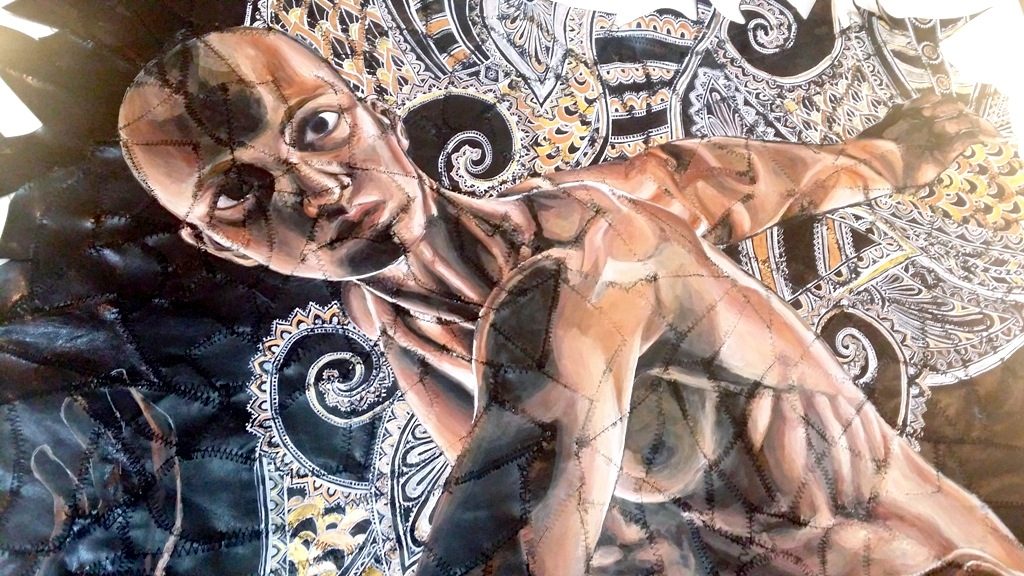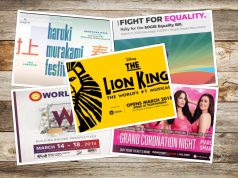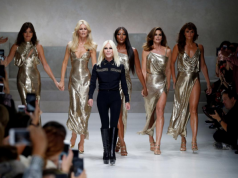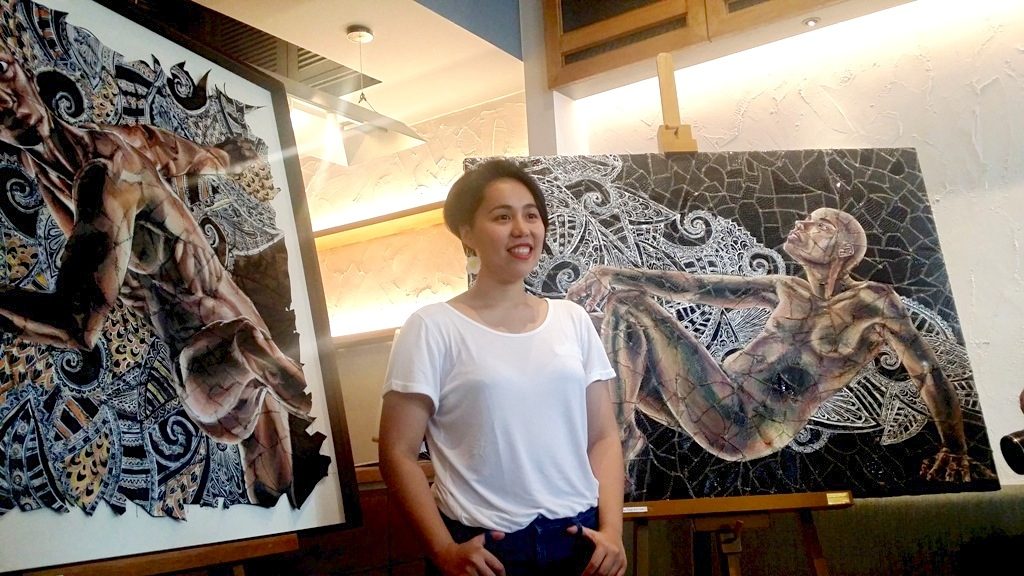
Painter Ina Jardiolin is having her second solo how entitled Stretch(ed) Mark(ed) on view until September 25 at Kaida Contemporary in Quezon City. Photo by Romsanne Ortiguero, InterAksyon.
Instead of canvas, 27-year-old painter Ina Jardiolin uses leather and wooden shoe lasts or hulma (used by local shoemakers) as medium for her second solo show entitled Stretch(ed) Mark(ed). The show opened on Sunday, September 10, and is on show till September 25 at new art space Kaida Contemporary in Quezon City.
The exhibit showcases Jardiolin’s experimentation on materials, and engages the viewer on conversations about gender, identity, and life experiences.
“I come from painting (as my background). I guess I’m just trying to experiment with the materials. I used leather and wood; I’m trying to upcycle materials. That is my own personal advocacy—I believe in trying to have a very low carbon footprint. I don’t get new leather sheets; I go to factories, and get the stuff that they are going to discard anyway,” Jardiolin, who is a graduate of University of the Philippines’ Fine Arts, told InterAksyon during a preview of her exhibit.
Leather is quite a familiar material for Jardiolin, who hails from a family of Marikina shoemakers. She recalled, “It was actually my family who suggested it. I’ve been painting on canvas since I started and my family told me, ‘Hey why don’t you try this? These are just old materials lying around.'”
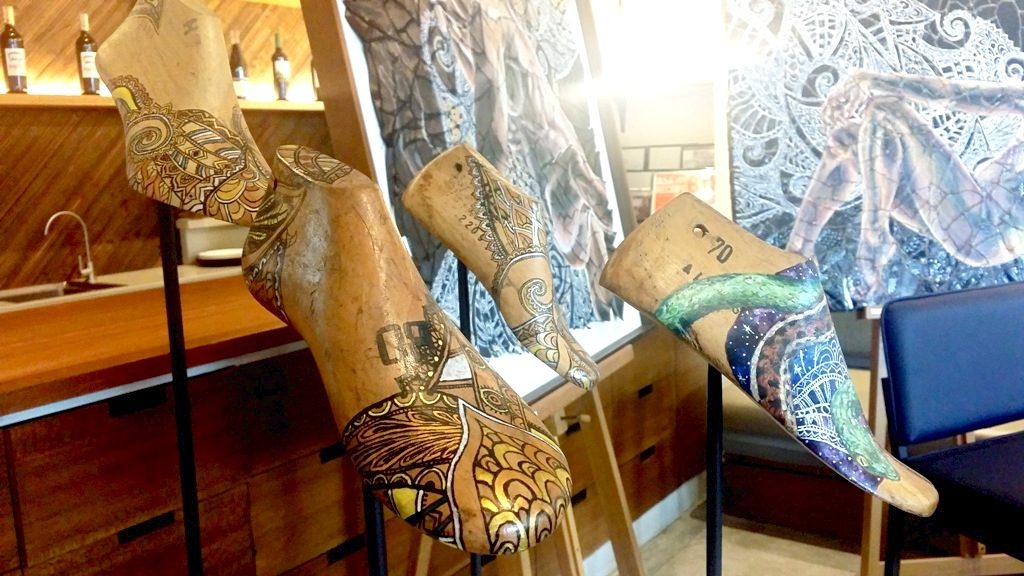
Ina Jardiolin’s paintings on wooden shoe lasts or ‘hulma’ that are traditionally used by shoemakers. Photo by Romsanne Ortiguero, InterAksyon.
The young artist shared her first collection called Hulma consisted of paintings on wooden shoe lasts—mostly of animals that show different gender traits apart from male and female.
“These wooden hulma are becoming outdated as a shoe-making material,” Jardiolin shared, and added that if she turns it into lasting pieces of art, she can show a peek into the history of how shoe-making was done before.
“For Hulma, I chose animals that can either change gender or were born as half (male or female). Literally, half-and-half, like butterflies, which is why their wings are different from each side—one side is female and one side is male.”
Bilateral gynandromorph, the condition, is characterized by a 50-50 split of female and male traits as seen in species like butterflies. That is why, one of Jardiolin’s work entitled “Paru-Paro” shows a butterfly with different colors on each side.
Other works with imagery touching on gender topics include clown fish and snakes—animals that are known to switch gender traits.
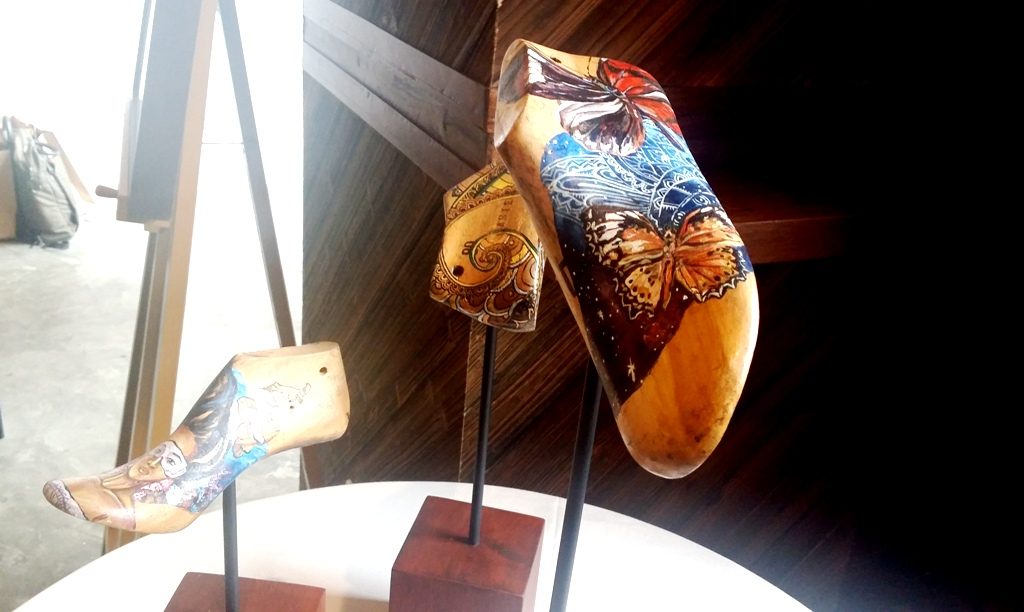
Ina Jardiolin’s ‘Paru-Paro’ (rightmost). Photo by Romsanne Ortiguero, InterAksyon.
Jardiolin shares, “It’s (gender) actually something that I feel people should be open to discussing to get the conversation started.”
The mounted paintings with leather as canvas share the same concept as Hulma, which features androgynous subjects. She said, “A very common theme in my work, or the imagery of my work, is usually identity.”
She noted that using leather or skin in relation to how the concept of identity is shown in her work is a “juxtaposition or maybe even irony” since individuals are usually being judged based on skin.
On her creative process, the artist adds, “When you make paintings, you have to stretch the canvas then you have to paint it. Like skin and stretch marks, when you go through life, it will mark you. It’s like that.”
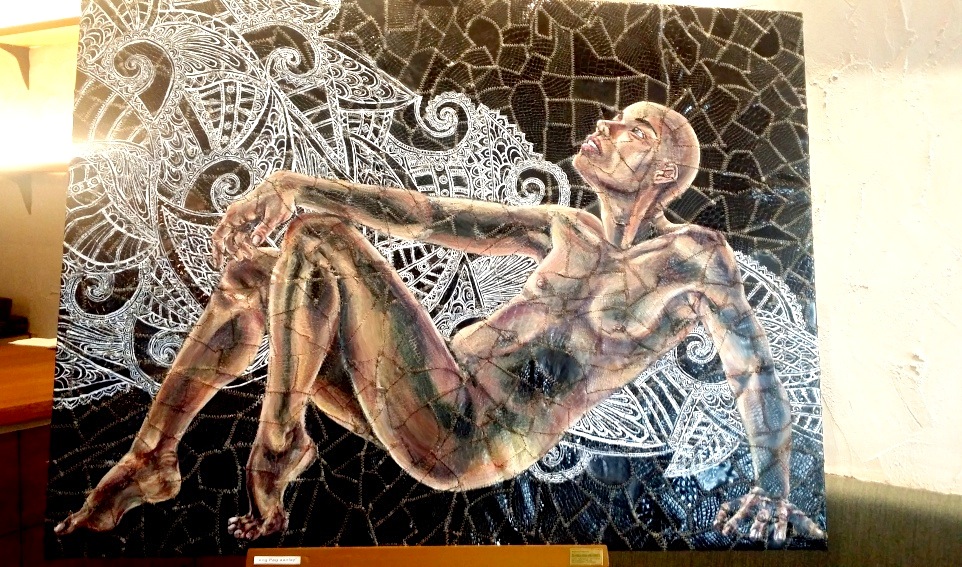
Noticeably, Jardiolin’s mounted paintings have patterns as background or adorned on the bodies of the subjects. Some resemble intricate paisley while others look like the whirling motion of a pond or river. The artist says these were created unintentionally.
The artist shares, “I have swirls in the background—very organic-looking movements—because I believe in people’s freedom, expression, and gender. It is very fluid because I believe we shouldn’t limit ourselves. I don’t plan these swirls. I do it kind of spontaneously—that in itself reflects how I feel.”
The narratives in all of Jardiolin’s works were inspired from different stories—stories she heard, her own experiences, and stories of other people. Through these stories conveyed in her work, she hopes that “everyone should not be restricted by a set of roles.”
“My art is my reaction to identity and the cultural expectations regarding gender. I want the world to be more open to different ideas that veer away from the usual norms.”
• Stretch (ed) Mark (ed) by Ina Jardiolin runs till September 25 at Kaida Contemporary in Quezon City; 45 Scout Madriñan St. South Triangle, Quezon City; gallery hours from 10 a.m. to 7 p.m. For inquiries, (+63) 927-9297129
